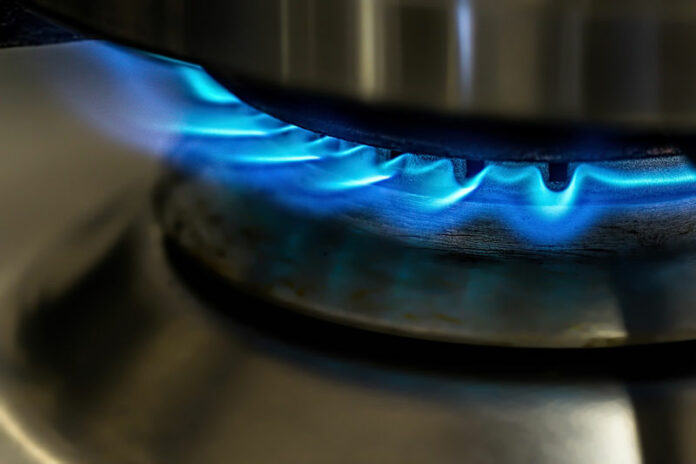Healdsburg City Council wants to know whether you prefer cooking with electric or gas.
The council met on Aug. 19 at city hall and discussed the possibility of pursuing an energy reach code next year. An energy reach code goes above and beyond state requirements on energy use to, primarily, attempt to break dependency from fossil fuels. The energy reach code would apply to new home construction in the city. The city report notes that 28% of greenhouse gas emissions came from the home in 2015.
The next step will be holding public workshops.
In order to create a reach code, the city stated that it must be proven to be cost effective, have a three-year sunset unless renewed and must have two public hearings before adopting.
The city noted that several cities in Sonoma County are exploring adopting a reach code as well.
Options to be discussed at public hearings for the reach code include a mixed fuel option that could be gas and electric or all electric; electric space and water heating, which would still allow gas cooking and fireplaces; and going all electric and eliminating gas hookups.
Councilmember Shaun McCaffery said that pursuing the second option may be best, as marketing a home with the possibility of gas cooking would be an easier sell. Councilmember Evelyn Mitchell agreed, adding that she enjoyed having a gas fireplace and was hesitant to not allow future homes to have them.
Councilmember Joe Naujokas disagreed. He said that proper education on electric appliances could sway potential homebuyers. New technology, he said, such as radiant and induction cooking, cooked food in just as good a way as gas.
“We need to wean ourselves off fossil fuels,” he said, leaning toward going all electric.
Mayor David Hagele agreed. He said he had talked with chefs in the city and found electric appliances were used in some top kitchens. If people knew that the trend was being accepted by top chefs, then homeowners would likely have more willingness to go electric.
Vice Mayor Leah Gold chose to remain neutral in the discussion until public workshops have been held.
The economic impact was something the council wanted to have more details of for the public, particularly as the reach code would also apply to affordable housing. There was also discussion to make sure that builders’ voices were heard, as selling all-electric homes could prove difficult.
In terms of cost efficiency, all electric options would be viable in two ways. First, not running gas lines and hookups to new homes would create significant savings up front, according to Utilities Director Terry Crowley. Then, the long-term savings of high efficiency appliances would eventually surpass the initial cost of purchase and installation.
Hagele also wanted to have information ready for the public as to what the cost impact looks like for the second or third homeowner of future builds.
Trash renewal
Council also approved the renewed contract with Recology for trash services in the city. The new contract includes a rate increase, and takes effect Sept. 1.
The rate increase, which occurs regularly each year, will put rates at the following:
• 20-gallon cart: $12.69, up from $11.93
• 35-gallon cart: $16.85, up from $15.95
• 60-gallon cart: $24.22, up from $23.07
• 90-gallon cart: $32.90, up from $31.43
One member of the public wanted to know if the city could put a more progressive tax on carts so that 90-gallon carts paid a higher percentage of the added cost of doing business to penalize higher trash use.
The council briefly debated whether a fee rate should be used as a punitive fee, though there was no discussion as to how a higher rate on a larger bin would correlate to penalizing higher waste per person, as each bin is typically associated with an address that can have a wide variance of people living at it.
Ultimately, it was City Attorney Samantha Zutler who pointed out that the rate increase would have to be re-noticed and a public hearing would need to be scheduled if such a fee structure were to be considered. After that, a motion was made by Gold to adopt the structure and it passed unanimously.
Dry Creek intersection
Stop signs are coming for the Highway 101 and Dry Creek Road intersection until a plan is in motion for likely either a roundabout or light system.
The city voted unanimously to approve a professional services agreement with AECOM Technical Services to get a preliminary engineering design in an amount not to exceed $172,260.
The work will include studying the roundabout and traffic light alternatives and possibly other options. It will also provide a cost estimate for each project. There will also be a schedule for compliance with the Caltrans process and a traffic analysis of the area, among other items.
Mitchell said that she thought for the amount of work to be done, the city got a good price.
The push to get the intersection fixed comes as projects like the North Area Entry Plan (NEAP) begin to see fruition at the north end of town.
As was agreed upon with Comstock on approval of the NEAP, Comstock will pay for part of this improvement, coming in the form of 50% of the cost of the analysis. The remainder will come out of the city’s street fund.
It was not specified exactly when the analysis will be completed or what timeline any project may have afterward, but Public Works and Transportation Director Larry Zimmer said that the work will be of value for a significant time after completion, so if the intersection is not changed until five years from now, the city could still look back to those documents.
69.5
F
Healdsburg
April 20, 2025








